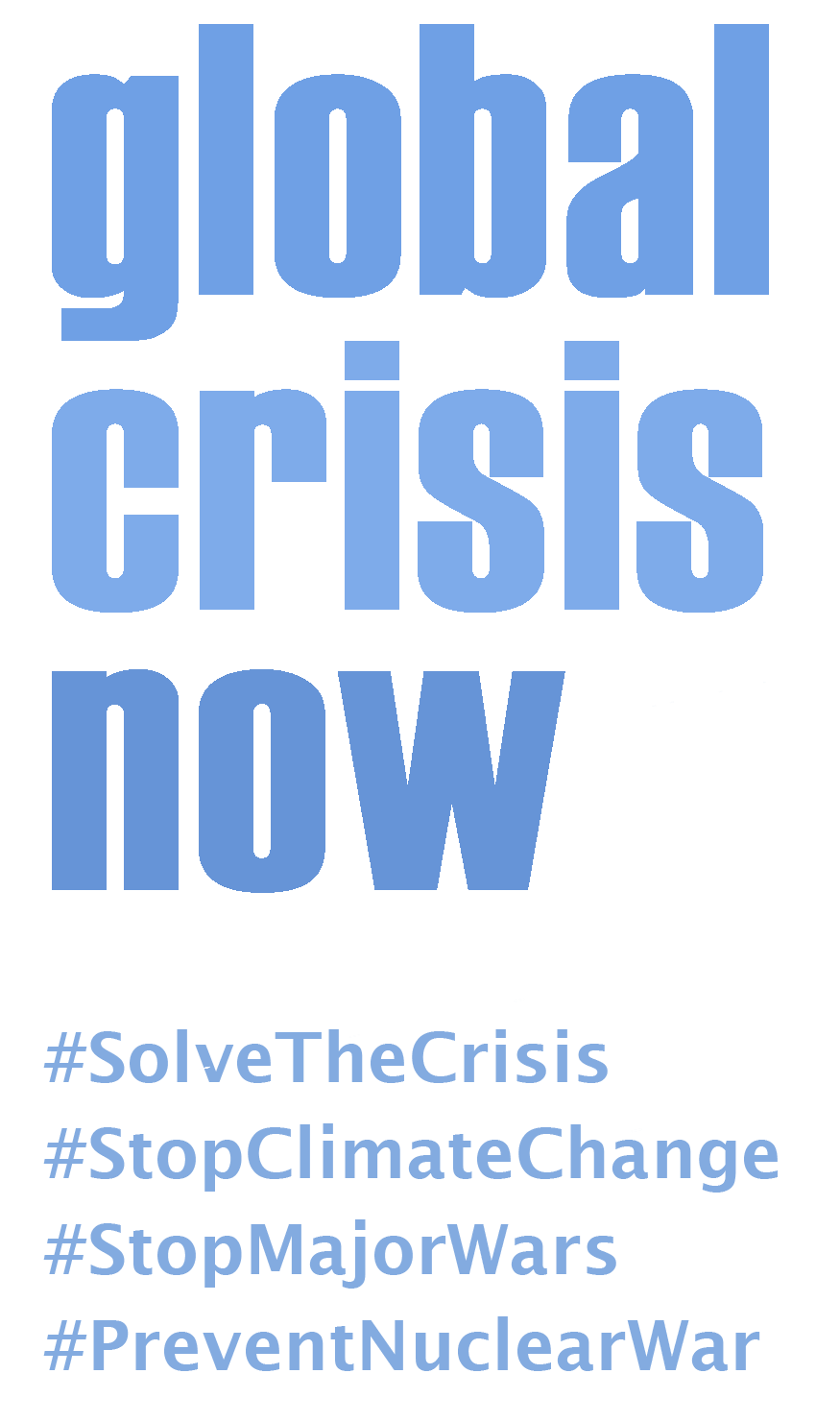1. US National Climate Assessment, May 2014 (website)
2. ibid US National Climate Assessment, May 2014
3. Nucitelli et al, Skeptical Science, October 2012 ![]()
4. Summary for Policy Makers, Working Group, IPCC 5th Assessment Report, September 2013 ![]()
5. Geo Risks Research, Munich, January 2013 ![]()
6. Framing The Way to Relate Climate Extremes To Climate Change![]() – Kevin Trenberth, NCAR, Boulder Colorado, March 2012
– Kevin Trenberth, NCAR, Boulder Colorado, March 2012
7. Summary for Policy Makers, Working Group, IPCC 5th Assessment Report![]() – September 2013
– September 2013
8. ibid US National Climate Assessment, May 2014
9. The Scientific Guide to Global Warming Scepticism, Skeptical Science![]() – December 2010
– December 2010
10. ibid US National Climate Assessment, May 2014
11. Paleoclimate, Energy Imbalance & Milankovic papers, James Hansen et al, GISS NASA 2012 (website)
12. Neven et al, PIOMAS, University of Washington, May 2014 (website)
13. Neven, Arctic Sea Ice Blog 2012 (website)
14. Widespread rapid grounding line retreat of Pine Island Thwaites, Smith & Kohler glaciers, West Antarctica
15. Update Of Greenland Ice Sheet Mass Loss: Exponential ![]()
16. Tipping Elements in the Earth’s Climate System![]() – Lenton, Schellnhuber et al., PNAS, February 2008
– Lenton, Schellnhuber et al., PNAS, February 2008
17. Early Warning of Climate Change Tipping Points, Lenton, Nature Climate Change, July 2011 (website)
18. Global Carbon Budget 201, Global Carbon Project, September 2013
19. Hans Joachim Schellnhuber, Director, Potsdam Institute for Climate Impact Research, New York Times, 13th March 2009 (NYT website)
20. Four Degrees and Beyond – the potential for a global temperature increase of four degrees and its implications (website) – Royal Society Transactions, January 2011
21. 4 Degrees Hotter, Climate Action Centre Primer![]() – David Spratt, 14th February 2011
– David Spratt, 14th February 2011
22. The Scotsman, 28th November 2009
23. ibid: “Climate Change Going Beyond Dangerous”
24. Insights from past millennia into climatic impacts on human health and survival, A J McMichael, PNAS, December 2011
25. Climate Change: Drought may threaten much of globe within decades, Aiguo Dai, NCAR, October 2010
26. World Bank, 2012, Turn Down the Heat: Why a 4°C World Must Be Avoided
27. Time to leave GDP behind, Costanza et al, Nature, January 2014
28. World Ecological Footprint, National Footprint Accounts 2012, GFN, April 2014
29. Global Footprint Network
30. BP Statistical Review of World Energy 2013 http://www.bp.com/content/dam/bp/pdf/statistical-review/statistical_review_of_world_energy_2013.pdf
31. Murphy & Hall 2010: http://www.soest.hawaii.edu/GG/FACULTY/ITO/GG410/EROI_Future_Energy_Sources/Murphy_EROI_AnNYAcSci10.pdf
32. “Ten Fundamental Principles of Net Energy”, The Encylopedia of Earth, 2008. http://www.eoearth.org/article/Ten_fundamental_principles_of_net_energy
33. “Economic Scenarios for an Age of Declining EROEI’s”, H.Kunnes, ASPO-USA, October 2009. http://aspo-usa.com/2009presentations/Hannes_Kunz_
Oct_11_2009.pdf
34. “EROI of different fuels and the implications for society”, Hall, Lambert & Balogh, Energy Policy May 2013: http://ac.els-cdn.com/S0301421513003856/1-s2.0-
S0301421513003856-main.pdf?_tid=b4407c42-1add-11e4-bbb2-00000aab0f6c&acdnat=1407050204_3ff1a1fd78e39aa7581196f4436794c6
35. “No quick switch to low-carbon energy”, G.Kramer & M.Haigh, Shell International, Nature, December 2009: http://www.nature.com/nature/journal/v462/n7273/
full/462568a.html
36. “Resources to Reserves”, IEA 2013: http://www.iea.org/etp/resourcestoreserves/
37. Energy Watch Group, 2007
38. Colin Campbell, 2013
39. World Energy Outlook 2011, IEA, Paris
40. ibid, World Energy Outlook 2011, IEA
41. Getting Energy Prices Right: From Principle to Practice”, Parry et al, IMF, July 2014:
http://www.elibrary.imf.org/view/IMF071/21171-9781484388570/21171-9781484388570/21171-9781484388570.xml?rskey=kHyJS5&result=1&highlight=true
42. BP Statistical Review of World Energy 2014, Energy Matters – Euan Mearns:
http://www.bp.com/en/global/corporate/about-bp/energy-economics/statistical-review-of-world-energy.html
http://euanmearns.com
43. ibid “Resources to Reserves” IEA 2013
44. “Hydraulic Fracturing: History of an Enduring Technology”, Montgomery & Smith, Journal of Petroleum Technology, December 2010: http://www.spe.org/jpt/
print/archives/2010/12/10Hydraulic.pdf
45. “US Redraws World Oil Map”, Wall Street Journal, 13th November 2012 http://online.wsj.com/article/SB10001424127887324073504578115152144093088.html
46. “Drill, Baby,Drill: Can Unconventional Fuels Usher in a New Era of Energy Abundance?”, J. David Hughes, Post Carbon Institute. February 2013: http://www.
postcarbon.org/drill-baby-drill
47. “The Myth of “Saudi America”, Raymond Pierrehumbert, Slate Magazine, 6th February 2013: http://www.slate.com/articles/health_and_science/science/2013/02/
u_s_shale_oil_are_we_headed_to_a_new_era_of_oil_abundance.html
48. “The Big Deal About US Energy Self-Sufficiency”, A Berman, The Oil Drum, October 2012:
http://www.theoildrum.com/pdf/theoildrum_9584.pdf
49. “Are We Entering a Golden Age of Gas?”, International Energy Agency, Paris, 2011:
http://www.worldenergyoutlook.org/goldenageofgas/
50. Meinhausen et al, Greenhouse-gas emission targets, Nature, April 2009,
Updated from IEA World Energy Outlook November 2012
51. D. Spratt, M.Raupach,I.Dunlop based on IPCC AR5, 2014
52. US National Climate Assessment, May 2014: http://nca2014.globalchange.gov
53. Damian Carrington, “Carbon bubble will plunge the world into another financial crisis”, The Guardian, 18 April 2013, http://www.theguardian.com/
environment/2013/apr/19/carbon-bubble-financial-crash-crisis
54. Resilience Alliance, Thomas Homer-Dixon, Ian Dunlop
55. Bulletin of Atomic Scientists, “Doomsday Clock Moves One Minute Closer to Midnight”, press release, Washington DC. 10 January 2012
56. “A New Global Partnership: Eradicate Poverty and Transform Economies through Sustainable Development”, United Nations, 2013, p. 31
57. “Report of the Open Working Group of the General Assembly on Sustainable Development Goals”, United Nations, A/68/970, 12 August 2014, section 12. c
under Goal 12” Ensure sustainable consumption and production patterns”
58. Anderson K, Deputy Director, Tyndall Centre for Climate Change Research, UK (2013): http://www.climatecodered.org/2013/07/stop-tailoring-globalwarmingscenarios.
html?utm_source=feedburner&utm_medium=email&utm_campaign=Feed%3A+ClimateCodeRed+%28climate+code+red%29
